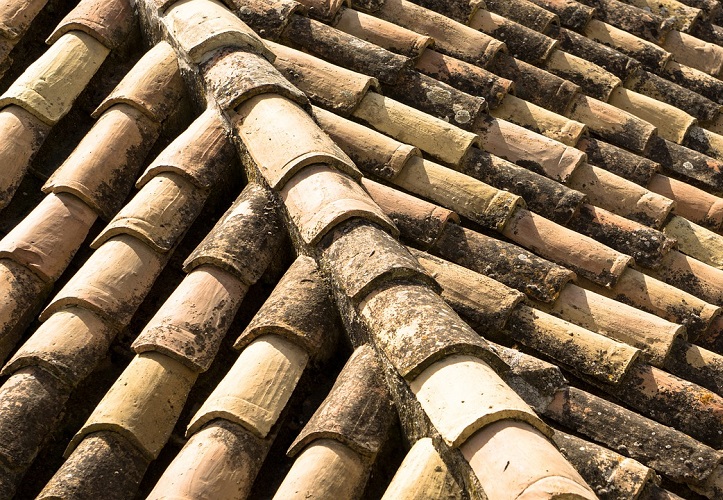How To Judge The Quality Of An Old Roof?
An old roof can be a cause for concern as it may be susceptible to leaks, cracks, and other forms of damage. While a new roof may be the best solution, it may only sometimes be necessary. Sometimes, a roof can be restored or repaired to extend its lifespan.
However, before deciding on any course of action, assessing the quality of the old roof is essential. This can help determine whether it is worth repairing or needs to be replaced entirely. In this article, we’ll look at ways to assess the quality and condition of an old roof so that any remedial work needed can be done quickly.
1. Understand The Roof’s Materials
If you are seeking a new roof for your home, it is best to become educated about the different materials on the market. Wooden shingles are often used for heritage properties and areas with a historical look, and they help maintain aesthetic standards in neighborhoods like yours. However, asphalt shingles offer a lower-cost option without sacrificing long-lasting protection.
Metal roofs are a newer technology, but they can be lower maintenance than traditional options. They also tend to have a higher lifespan than many other choices, making them attractive if you want minimal fuss from your roof in the coming years. When it comes to selecting which material is most suitable for your home, take time to understand its strengths and limitations ahead of any purchase decision.
2. Evaluate the Roof’s Ventilation
Proper ventilation is critical in extending a roof’s lifespan and preventing damage to the structure of the building. Heat can build up in the attic without adequate ventilation, causing shingles to deteriorate and age prematurely. This can lead to cracks, curling, and, ultimately, leaks in the roof. Additionally, excess moisture can accumulate in the attic, leading to mold growth, rotting wood, and structural damage.
Proper ventilation in the roof helps regulate temperature and moisture levels, reducing the risk of damage to the roof and building structure. You can achieve suitable ventilation on your roof through soffit vents, ridge vents, or other ventilation systems. It’s vital to ensure that the ventilation system works correctly and that air flows freely through the attic.
Suppose you notice excessive heat or moisture in your attic or see signs of damage to your roof. In that case, it’s essential to have your ventilation system checked by a professional roofing contractor.
3. Look For Signs Of Wear And Tear
An important step when buying a home is to inspect the roof. Wear and tear can often be seen on it depending on age, so pay attention to any signs that could indicate wear. Any cracks, bald spots, or unevenness in the material indicate that the roof has gone through cycles of heat and cold or has been exposed to various weather conditions for longer than it should have.
Although this does not necessarily mean it will need to be immediately replaced, make sure you get a professional or someone with expertise in the field to give you an official assessment so that you understand your roof’s condition before completing the purchase.
4. Examine The Edge Of The Roof
Whether it’s a tile, asphalt, or another type of roofing material on your home, ensuring the roof’s edges are in top condition is essential. Visually inspect the edge of the roof for any crumbling or missing shingles. Since these areas typically receive more brunt weather than normal flat surfaces, they’re prone to more likely damage. What can start as a few loose tiles can quickly lead to larger issues, such as water damage or rotting wood underneath?
Checking your edges regularly and keeping up with maintenance isn’t just about fixing eyesores. Instead, it’s vital to protect your building from further destruction. Doing so not only prolongs the lifespan of other parts of your roof but also safeguards other aspects, like interior piping, that could be expensive to repair if things suddenly worsen.
5. Inspect Gutters and Downspouts
Knowing when to inspect gutters and downspouts can be the key to avoiding costly home repairs. If you’re wondering when is the best time for an inspection, spring, and fall are your best bet; both seasons come with increased thunderstorms that can dump a lot of water into your gutter system, increasing the likelihood of clogs forming. When inspecting your gutters, check for any sagging or movements which could signal a clog in the downspout or even displaced parts due to fallen tree branches.
It’s always better to detect small issues before they become major headaches. If you notice anything concerning during an inspection, quickly reach out to a professional contractor who can help mitigate further damage to your home. Prevention is always cheaper than repair.
6. Watch Out For Potential Leaks
It’s vital to be proactive and watch out for leaks in your home’s roof. In addition to looking out for signs of water damage, like peeling paint or staining on your walls and ceiling, you should also be mindful of possible causes: a damaged shingle, clogged gutters, or worn flashing.
If the problem is more severe than an easy fix with caulk or asphalt cement, hire a professional roofer for a more thorough inspection. Taking that extra effort will go a long way in ensuring the integrity of your home-–not to mention your peace of mind.
7. Get An Inspection From A Professional
It may seem like an extra and unnecessary expense, but a professional inspection from an experienced roofer can save you plenty of money (and headaches). Often, a roof that looks fine on the surface can hide underlying issues that can snowball if left unattended. And regarding your roof – you want to catch potential problems immediately.
A professional’s attentive eye can help identify weaknesses or flaws quickly so that appropriate action can be taken before further damage occurs. In other words, an inspection is well worth the investment to protect your home and keep its value high – now and in the future.
As important as it is to inspect and maintain your roof proactively, there may be specific issues that not even the most attentive homeowner can detect. That’s why it’s wise to inspect your roof professionally every three to five years. That way, you can rest assured that potential problems will be identified quickly before they cause expensive damage. It also helps you confirm that the quality of materials used in your roof is up-to-date and secure against harsh weather conditions.











